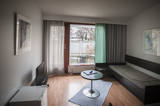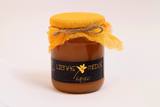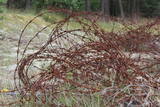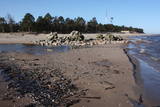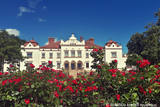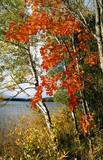| Nr | Name | Beschreibung |
|---|---|---|
|
Das Motel Marine befindet sich in der Nähe des Zentrums von Ekenäs und ist nur eine Gehminute vom Strand entfernt. Hier arbeitet die Rezeption rund um die Uhr und ist immer bereit, Ihnen zu helfen. Dieses Motel bietet verschiedene Arten von Zimmern, angefangen von Einzelzimmern bis hin zu großen Familienzimmern mit Küche. Alle Zimmer haben einen eigenen Eingang. Es gibt auch ein Restaurant und eine Sauna im Motel. |
||
|
Ein Familienunternehmen, das sich um saubere Umwelt, Bio-Produkte und Design kümmert. Es wird eine Führung durch die Imkerei mit Verkostung angeboten. |
||
|
Hier befindet sich ein Gedenkstein für K. Valdemārs, der von den Verdiensten von K. Valdemārs für den Werdegang und die Entwicklung der Republik Lettland zeugt. An dieser Stelle befand sich einst die Seefahrtschule von Roja bzw. Lubezere und neben der Schule – ein Lehrerhaus, das bis heutzutage erhalten ist. Jetzt sind hier die Privatpraxen der Familienärzte von Roja. Die Seefahrtschule existierte vom Jahr 1873 bis zum Jahr 1915, aber während des Ersten Weltkriegs vernichtet wurde. Die Seefahrtschule bereitete die Steuermänner der Küstenschifffahrt vor. Hier konnte man kostenlos und auf Lettisch lernen. Lettische Seeleute waren in Russland und im Ausland sogar auf dem amerikanischen Kontinent bekannt. Sie wurden wegen der Sachkenntnis, Ehrsamkeit und Ergebenheit geehrt. (Die Quelle: Roja TIZ) |
||
|
Das Wirtshaus befindet sich am Rande der Straße Murjani – Valka (A3). Es ist ein zweistöckiges Blockhaus mit Terrasse. Hier werden Sauna, Picknickplatz und Spielplatz für Kinder angeboten. Das Wirtshaus arbeitet mit lokalen Bauern und Heimarbeitern zusammen. Lettische Küche: Salat der Stadt Valmiera, gekochte Zunge, graue Erbsen, Frühstück nach dem Geschmack der Bauer, kalte Suppe, Zanderfilet, Lammfleischbraten, gegrilltes Schweinefleisch, geschichtetes Roggenbrot-Dessert, Erdbeerencreme mit Marmelade, Roggenbrot, Kräutertees. Das besondere Gericht: Rindfleischfilet mit Kartoffelpfannkuchen. |
||
|
Die Wirtschaft Strauti befindet sich am östlichen Rand des Hügellandes von Embūte. Südlich wird die Wirtschaft von Wäldern eingeschlossen, wo viele Wildtiere wohnen, die man in Lettland treffen kann. Neben der Wirtschaft befinden sich die Gebäude der ehemaligen Geflügelfarm. Auf dem Hof werden Zuchtkaninchen, Schafe, verschiedene Geflügel, zwei Pferde und ein Pony gezüchtet. Auf den Feldern der Wirtschaft weiden Kühe, darunter kann man auch die blauen Kühe von Lettland besichtigen. Die Wirtin bietet Führungen für Schülergruppen und andere Interessenten an. Mit vorheriger Anmeldung kann man Kaninchenfleisch, Schafwolle, sowie die in der Wirtschaft angebauten Gemüse kaufen. Biowirtschaft. |
||
|
Der botanische Garten wurde 1993 in dem landschaftlich reizvollen Tal der Danė begründet. Er hat eine Fläche von 9,3 ha. 2002 wurde dem Garten der Status als dendrologischer Park zuerkannt. |
||
|
The fisherman offers you a chance to engage in string-based fishing at the seashore near Nida and Pape, fishing out in the sea (1-2 people), and ice fishing during the winter. You can smoke what you catch or cook fish soup with it. |
||
|
Der Park befindet sichim Nordwestenvon Jēkabpils, am linken Ufer des Flusses Daugava, gegenüber der Insel Ādamsona (Krustpils) saliņa. Im 19. Jh. wurde dieser Park als ein Erholungs- und Veranstaltungsort für die Einwohner der Stadt eingerichtet. Man kann sicher behaupten, dass dieser Ort in der ganzen Welt bedeutend ist, weil sich hier ein Gedenkstein befindet, der der Tätigkeit des Akademikers – des Professoren der Universität Tartu, des Astronomen und Geodäten – Friedrich Georg Wilhelm von Struve (1793 – 1864) gewidmet ist. Dieser Stein ist an dem Ort enthüllt worden, wo Herr von Struve die Messung des Gouvernements Livland beendet hat. Der Längenkreis von Strūve (die Längenkreispunkte befinden sich auch in vielen anderen europäischen Ländern) ist in die Liste des UNESCO-Welterbes aufgenommen worden. |
||
|
Station der Raketen zum Fliegerabwehr ist im weiten Territorium südlich von Pāvilosta gelegen. Ein verlassenes und degradiertes Naturterritorium, wo die Warnungszeichen "Gefährlich, lebensgefährlich!" aufgestellt sind.
|
||
|
In terms of territory, it is the most impressive dune range in the Baltics. This is the only place in the Baltics, where one can enjoy open dune sands that are still active and, under the influence of wind, form the so-called eolian relief forms. There are trails, wooded trails and a paved bikeway for the conveniences of visitors. In order to protect the dune, The Dunes of Curonian spit National Park has been established . |
||
|
The owner of the farm offers attractive tours during which you will learn about chinchillas, animal enclosures, as well as quails which you can view and purchase. |
||
|
Malta (Borovaja, Borovska) Old-Believers Prayer House. The construction
of the church was started in 1931 by A. Gruncevičs. The Church is an architectural
monument of local importance.
|
||
|
Redāns ir 19. gadsimta beigās celtā Liepājas Jūras cietokšņa daļa, kur notikušas Latvijai nozīmīgas cīņas. Lai gan uzbūvētie nocietinājumi ap Karostu tika atzīti par stratēģisku kļūdu un vairums no tiem saspridzināti, Redāns palicis teju neskarts. Tā ir arī vienīgā nocietinājuma daļa, kur notikusi reāla karadarbība.Par liecina ložu šautie caurumi sienās. 1919. gada 14. novembrī šeit notika brīvības cīņas par neatkarīgu Latviju, aizstāvot Liepāju pret Bermonta karaspēku. 14. novembra rītā, pārejot aizsalušo Tosmares ezeru, bermontiešu kājnieki ieņēma Redānu. Taču dažu stundu laikā liepājnieki veica niknu pretuzbrukumu, un vāciešiem nācās atkāpties. Jūnijā, jūlijā un augustā katru dienu plkst. 11.00–17.00 pie Redāna gaidīs zinošs gids, kas būs gatavs pastāstīt vairāk par Liepājas cietoksni un vēsturiskajiem notikumiem Karostā. Cena – 2 EUR no personas. |
||
|
Das Kap Kolka – ist das ausgeprägteste Kap an der lettischen Meeresküste, wo man den Zusammenstoß
der Wellen von zwei „Meeren“ – der Ostsee (das große Meer) und der Bucht von Riga (das
kleine Meer) beobachten kann. Das Kap geht noch fünf Kilometer als Sandbank weiter ins Meer bis
zum Leuchtturm von Kolka. Am Kap Kolka geht die Sonne im Meer auf und runter, deshalb kann man
hier phänomenale Sonnenaufgänge und Untergänge beobachten. Das Kap Kolka ist aber auch ein
gefährlicher Platz für Schwimmer wegen der unbeständigen Strömungen und Treibsand. In den
Dünen beim Kap Kolka ist ein von Bildhauer G. Burvis gefertigtes Denkmal für „Die vom Meer Genommenen“
aufgestellt. Es ist eine symbolische Pforte, durch die man den Leuchtturm von Kolka sehen
kann. Noch gibt es ein altes Schiffswrack, den Stein – das Zentrum Europas und K. Valdemars
gewidmete Informationsstände zu besichtigen. Von außen kann man auch eine alte sowjetische
Militärbasis besichtigen, die heutzutage vom lettischen Grenzschutz genutzt wird. Während der
Frühlingsmigration
der Vögel ist das Kap ein bedeutender Platz für Wandervögel, die hier Rast machen
und sich erholen. Dieses Naturschauspiel lockt viele Vogelbeobachter an. Für die Bequemlichkeit der
Besucher gibt es einen Parkplatz, Bänke mit Tischen und ein Besucherzentrum. In der Sommerzeit gibt
es auch ein kleines Café – eine großartige Möglichkeit sich zu kräftigen!
|
||
|
Die Bauernwirtschaft Iesalnieki-1 befindet sich in der Gemeinde Vietalva der Region Pļaviņas. Der Hauptbereich der Wirtschaft ist Getreidezucht – Raps, Gerste, Weizen und Gräser. Gesamtfläche 180 ha. Interessant ist die Tatsache, dass zwei Brüder mit eigenen Kräften zusammen mehr als 800 ha bewirtschaften. |
||
|
Das Schloss und Museum Rokiškis stellt eines der wichtigsten kulturellen Zentren Oberlitauens dar. Der Park und die Schlossteiche unterstreichen den herrschaftlichen Charakter des Ensembles. |
||
|
Dies ist der schwierigste Abschnitt des Forest Trail, insbesondere am zweiten Tag. Hier, an der Küste des Finnischen Meerbusens, erhebt sich der nordestnische Klint - eine steile, felsige und waldbedeckte Klippe, die sich nicht durchgehend nach Tallinn und weiter zu den Inseln Westestlands erstreckt. Der Forest Trail verläuft auf der Klippe und steigt gelegentlich in Täler ab. Es durchquert das tiefe und weite Pühajõgi-Tal im Toila-Oru-Park und kommt nach Toila, einem beliebten Küstenort. Einer der ungewöhnlichsten Abschnitte des Waldweges in Nordestland, der bei gutem Wetter am Fuße des beeindruckenden nordestnischen Klint entlang führt, steigt dann in den Dörfern Valaste und Saka auf den Gipfel des Klint und bietet atemberaubende Ausblicke auf der Finnische Meerbusen. |
||
|
Neliela apdzīvota vieta nacionālā parka ziemeļrietumu daļā, kur kādreiz atradusies Rebases muiža. Mūsdienās no tās saglabājušās klēts atliekas, pie kurām apskatāms interesants vēstures liecinieks – sens akmens, ko izmantoja kulšanas procesā (Peksukivi). |
||
|
Größe Steinkreisen. In der Mitte befindet sich eine oder mehrere „Steinkapseln” für einen Verstorbenen. Wurden im Eisen- und Bronzealter errichtet. |
||
|
Dieses Territorium schützt die Landschaft der Lielauce – Hügel, die ein Teil des Ostkurzemer Hochlandes sind. Die Seen Zebrus und Svēte befinden sich in diesem Gebiet. Am nordöstlichen Ufer des Zebrus – Sees kann man den Burgberg Ezerlūķi sehen. Am östlichen Ufer des Sees befinden sich eine Bootsstation sowie ein Aussichtsturm und einige Informationstafeln über das Gelände. Das Gebiet umfasst geschützte Biotope wie Sumpfflüsse und sumpfige Wälder mit geschützten Vögeln und Fledermausarten.
|
||
